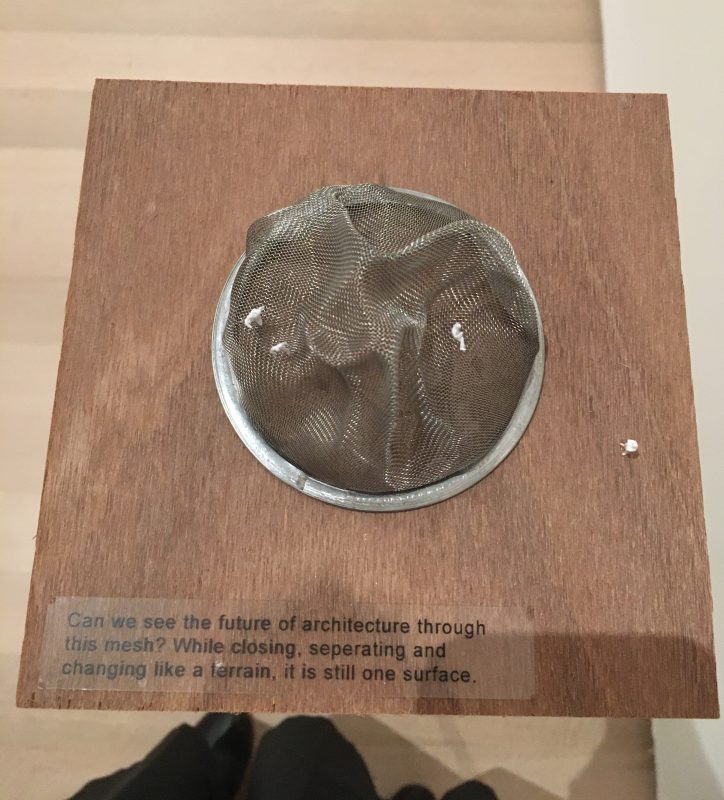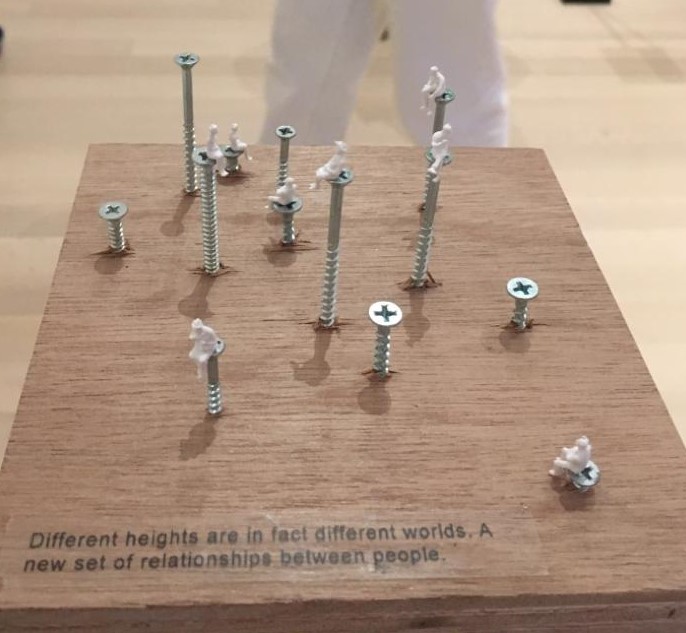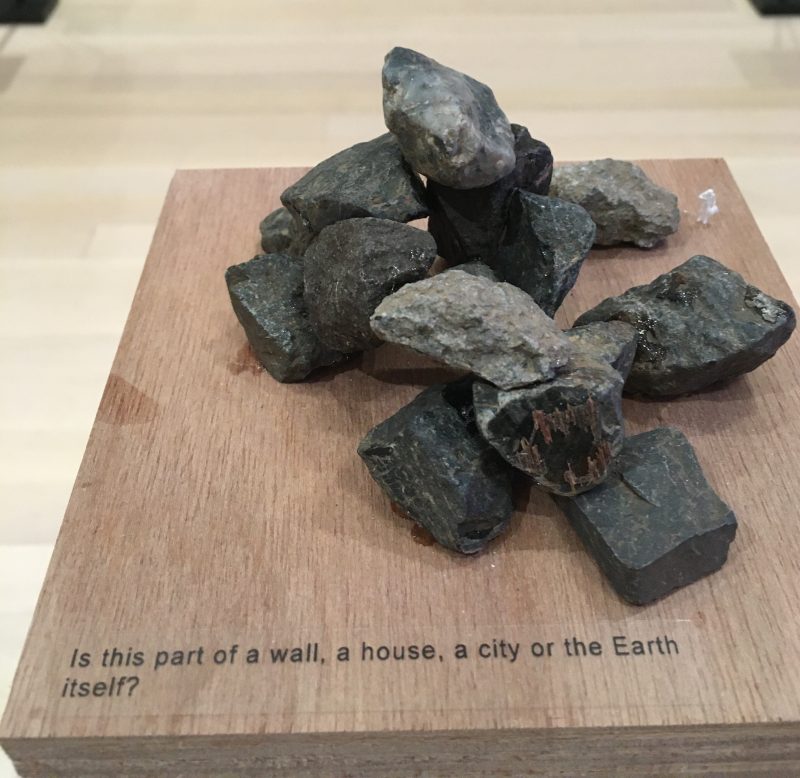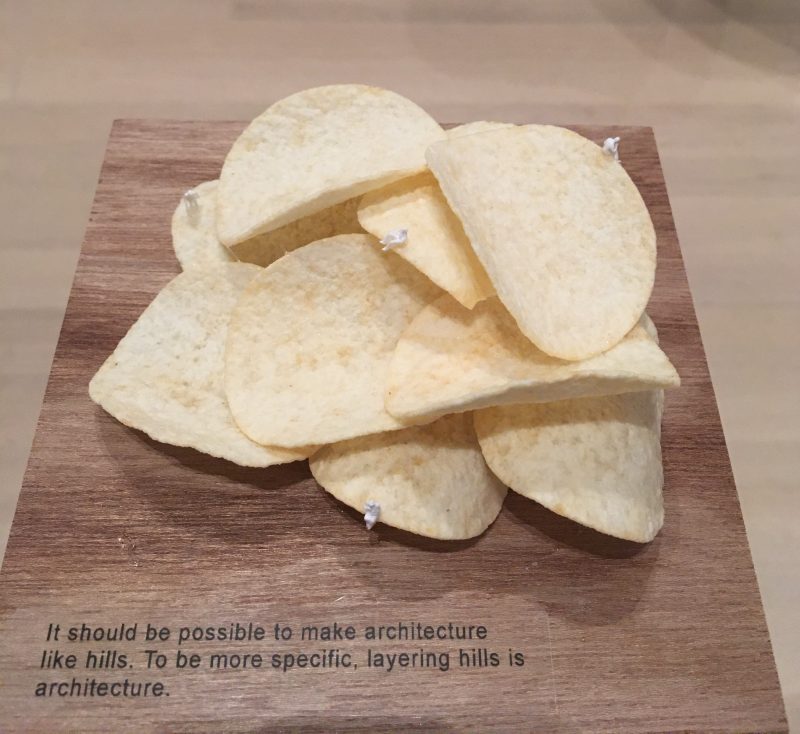Speculative Architecture
Posted on November 16, 2019Architecture in Everyday Objects
The architect Sou Fujimoto created an installation called: “Architecture is Everywhere”, which is being presented these days in the exhibition “Surrounds 11 Installations” at the MoMa museum. It includes 72 models made from everyday life objects from various materials. The objects are put on pedestals, below eye level, so the observer looks at them from a top-down perspective. At first glance, these seem like everyday objects we are familiar with, yet as we look deeper, we notice more details like miniature figures models and provocations written in small text.
“Is a potato chip architecture?… Fujimoto’s models invite us to imagine ourselves building and occupying our own complex architectures …the architect seeks “a different understanding of nature” [1].
“It should be possible to make architecture like hills. To be more specific. layering hills is architecture” [a]
This exhibition made me think about the role of an architect or a designer. As Anthony Dunne and Fiona Raby described in their book “Speculative Everything, “[Dreams can] inspire us to imagine that things could be radically different than they are today” [2]. Fujimoto constructs a speculative architecture model. The scenario is surreal – challenging scale and perspective, structures and materials.

“Can we see the future of architecture through this mesh? While closing, separating and changing like a terrain, it is still one surface” [b]
Buildings’ Influence on Social Relationships
Dunne and Raby believe that through speculative design “… we can help set a place … factors that may lead to undesirable futures can be spotted early…” Maybe the question is what kind of buildings does our society need? From what materials? What are the different perspectives that might arise from choosing specific structures and surfaces? What is hidden and what is visible? These are dilemmas that architects deal with in their everyday work.
Fujimoto’s speculative building challenges the question – for who is it made for and who decides about those buildings? It raises questions about the social relationships between people and how those are influenced by and structured by architecture. Fujimoto’s quote made me think – How does the height of a building influence the relationship between people? How does a person who works on the 63rd floor feel when he is looking down at the street or even up to the sky? How do the people on the street feel while they see someone up in the skyscrapers? Do they wish to be “that person” who works on the 63rd floor?
Anthony Dunne and Fiona Raby mentioned that people’s assumption when thinking of forms of design is that design is about problem-solving. Many of the challenges are unfixable and the only way to overcome them is by changing our values and behavior. They suggest not to over complicate things. “[The imagination] debate about alternative ways of being… can act as a catalyst for collectively redefining our relationship to reality” [3]. For Dunne and Raby, the idea of possible futures is a tool to better understand the present, often taking the form of scenario with a what-if question that sparks discussion.
Fujimoto uses everyday objects as a tool and medium to spark imaginative thought. By using the miniature figures a new scale is born for the everyday objects and the magic begins. The imaginative thought they inspire in the viewer reflects Dunne and Rabby’s notion of speculative design.
Design for a Better World
Do the Fujimoto model’s design for a ‘better’ world? Fujimoto challenges structure’s possibilities and using potato chips or raw stones criticizes as the models and tools used by architects who create new worlds. The use of everyday objects allows people to relate it to their world with critical reflection.

“Different heights are in fact different worlds. A new set of relationships between people” [c]
Deconstruction
Thomas Thwaites, in his ‘Toaster Project’, deconstructed a standard toaster and tried to build it from scratch with his own rules.
Thwaites discusses materials:
“Everything I can see, except maybe some woolen clothes and some wooden furniture, began life as a collection of rocks and sludge, buried in different parts of the world…. The rocks and sludge have been transformed in some extremely clever ways…” [4]
Similarly, Fujimoto creates miniature models that deconstruct visual terms of the architecture’s lexicon: scale, surfaces, materials, layers, shell, etc. [5] This lexicon is being challenged by the visual of the objects. How are these models different from those of standard architects’ made of paper and cardboard?

[d]

“Is this part of a wall, a house, a city or the Earth itself ?” [e]
[f]
A pile of rocks – “Is this part of a wall, a house, a city or the Earth itself?”
If we go back to the architectural history, maybe Fujimoto’s model might be Frank Lloyd Wright’s model for his Fallingwater masterpiece?
– Noga B.
Sources: [1] Moma website [2] Dunne, Anthony, and Fiona Raby, Speculative Everything: Design, Fiction, and Social Dreaming, London, England: MIT Press, 2013. [3] Dunne, Anthony, and Fiona Raby, Speculative Everything: Design, Fiction, and Social Dreaming, London, England: MIT Press, 2013. [4] Thomas Thwaites, Preface and “Deconstruction” in Toaster Project: Or a Heroic Attempt to Build a Simple Electric Appliance from Scratch (Princeton Architectural Press, 2011 [5] Stewart Brand, Chapter 2, How Buildings Learn: What Happens After They’re Built (Penguin, 1994) [pp 35-61]. Images: [a, b, c] Noga b. [d] Stewart Brand, Chapter 2, How Buildings Learn: What Happens After They’re Built (Penguin, 1994) [pp 38]. [e] Noga b. [f] Fallingwater by Frank Lloyd Wright - Getty Images
